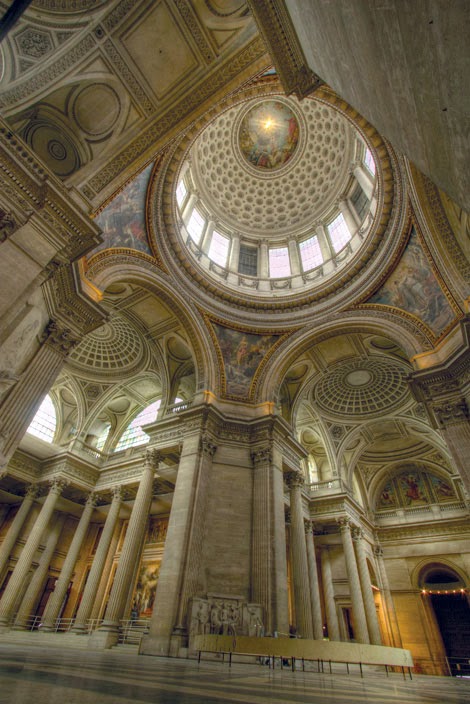Inspired by Rome's Pantheon and originally intended to become a church. A neoclassical architect, Jacques-Germain Soufflot finished the Pantheon just before the revolution. Of course, the revolutionaries had no use for another church, and thus designated it as a resting place for the "Founders of Liberty" a rival to the royal mausoleum at St. Denis. After the Revolution, the Panthéon yo-yoed between a church, a necropolis and, church headquarters until in 1885 it became a lay temple and tomb. The interior is shaped like a Greek cross with and iron framed dome in the center. The illustrious dead are entombed in the Pantheons lower level. It is one of the worlds most exclusive clubs. To take up residence, you must meet certain requirements. One must be a high achiever, french, dead. All but 2 of the 73 entombed here are men. Marie Curie a pioneer in the field of radiation and Sophie Berthelot who only got in because of her husband, chemist Marcellin Berthelot.
Other famous French that take up residence at the Panthéon include, Voltaire, Rousseau, Hugo, Zola, a president, Sadi Carnot. Some residents took longer than anticipated to be interred in the Panthéon.
Alexander Dumas joined in 2002 with his coffin draped in blue velvet and the Three Musketeers motto
"One for All, and All for One" embroidered on it. It also took the buildings architect,Jacques-Germain Soufflot, 59 years after his death to be granted residence here. The Panthéon is located in the Latin Quarter, in the 5th Addrondissement.







No comments:
Post a Comment